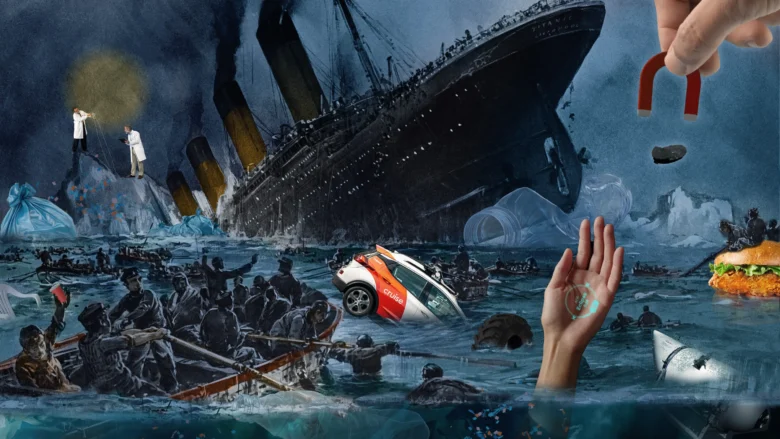When the Samsung Galaxy Note 7 was released in 2016, tech enthusiasts and loyal users were eager to see what Samsung would do next. Initially, the phone received rave reviews for its sleek design, high-end specs, and superior performance. But soon, users around the world began reporting that their phones were overheating and even catching fire. These alarming incidents led to a global recall. Samsung attempted to resolve the issues and re-release the phone, but the problems persisted. Eventually, the company had to stop production of the product altogether. The Note 7 incident cost Samsung billions of dollars and damaged the company’s reputation. It also prompted the industry to tighten battery safety regulations. The incident marked a significant milestone in the history of technology, demonstrating that hardware problems could derail even the most promising product launches.
Space Shuttle Challenger Explosion Tragedy
In 1986, the Space Shuttle Challenger crashed 73 seconds after launch, killing all seven astronauts on board. The world was in panic. Among them was a schoolteacher named Christa McAuliffe. She was about to become the first person to travel from Earth into space. The explosion was not caused by captain error or outside interference but by a technical problem. Investigation revealed that the O-ring seal on one of the shuttle’s solid-fuel rockets had failed due to the low temperatures. Although some engineers were aware of the defect, their concerns were ignored due to the need for a quick launch. The Challenger accident is a stark reminder of the consequences of ignoring technical warnings and putting time pressure above safety. This terrible incident not only shocked NASA but also changed the way companies approach technical risks and decisions.
Microsoft’s Zune: A Lesson in Poor Timing
The iPod came out in the early 2000s, and Microsoft decided to launch the Zune digital music player to competeofferedth it. While the product had some cool features and looked great, it wasn’t exactly popular with consumers. The biggest issue was timing. By the time the Zune launched, the iPod had already taken a giant share of the portable music player market, and iTunes had become a major part of digital music culture. Microsoft’s Zune had little incentive to make the switch. Although the Zune went through multiple iterations and style changes, it never really caught on. Eventually, Microsoft stopped producing it altogether. The Zune’s failure is often used to demonstrate that even big tech companies can fail if they enter a fast-growing market too late and without a clear competitive advantage. It also shows that in the world of consumer technology, brand, ecosystem, and user habits can matter more than technical specifications.
Google Glass: A Future That Came Too Soon
Upon its initial introduction, Google Glass promised to transform people’s technology usage forever. The smart glasses had a small screen and a voice-activated interface. Users could access information, navigate, take photos, and perform other actions without using their hands. The idea was bold and futuristic, and it caught the attention of the tech community for a while. But the excitement didn’t last long. People quickly started to dislike the device because it was expensive, had limited features, and raised privacy concerns. People didn’t like the idea of people wearing cameras on their faces, so the term “Glasshole” was coined. Google eventually pulled the product from the shelves. Although the first generation of Google Glass performed poorly, it had a giant impact on the conversation about smart technology, user experience, and appropriate digital behavior. It also indicated that people need to be willing to embrace technology while also accepting it into society.
Theranos: A Healthcare Tech Mirage
Theranos was a medical technology startup once valued at over $9 billion. It claimed to change the way blood tests were performed by creating a small, portable machine that could perform hundreds of tests using just a few drops of blood. Its founder, Elizabeth Holmes, became a well-known figure in Silicon Valley for her clear goals and perseverance. But the technology Theranos used never worked. Investigations by journalists and whistleblowers revealed that the company was running tests on ordinary computers and had manipulated the results. The startup made false claims and used inaccurate data to support them. Under investigation, Theranos eventually declared bankruptcy, leading to criminal charges against Holmes and other former executives. Theranos’ bankruptcy shocked both the tech and medical communities. It indicated that carefully crafted narratives and investor hype could obscure scientific facts. It also sparked debate about ethical responsibility, conducting proper research, and the risks of over-optimism in the startup world.
Conclusion
These famous technological failures can make us all think about innovation, desire, neglect, timing, and how people influence it from different perspectives. From smartphones catching fire to frustrating space missions, from devices that didn’t work at the right time to outright lies, they remind us that success depends on more than just new technology. It requires careful planning, ethical leadership, user acceptance, and, most importantly, the determination to admit and learn from mistakes. Despite the constant advances in technology, these failures remain a clear indication of the risks and responsibilities that come with pushing the boundaries.
FAQs
1. Let’s talk about big companies. Why do big tech companies fail?
Even big companies can make big mistakes when they act hastily, don’t listen to signals, don’t plan carefully, or are overconfident. Organizational culture and lack of communication can also cause similar failures.
2. Are technical failures always caused by mistakes?
Not always. Human error, management pressure, poor market timing, or ethical missteps also contribute to many failures, as demonstrated with Theranos.
3. Has the status quo subsequently benefited from these failed tools?
Yes, failures often lead to progress. For example, the Note 7 led to stricter battery safety regulations, while Google Glass influenced the design of new wearables.
4. How can companies avoid technology failures?
Companies can reduce risk by experimenting thoroughly, listening to their technology teams, being open and honest, and focusing on an honest approach. It’s also important to have a thorough plan and listen to users.
5. What do you think these technology failures have taught us?
In short, it’s not enough to have new ideas. To be truly successful, you have to be honest, do things the right way, and understand how technology works in practice.


